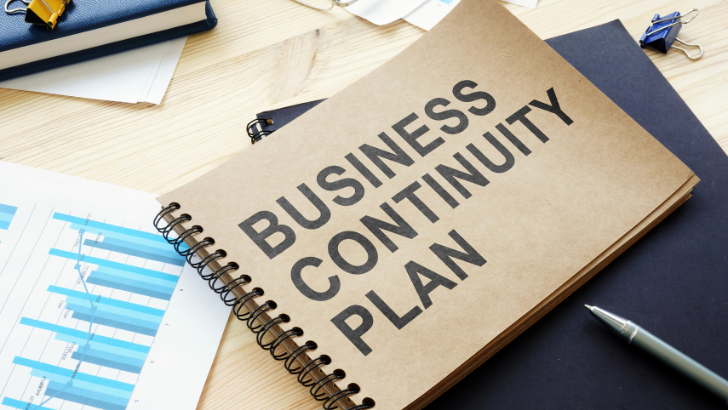As the world prepares for the spread of COVID-19, marketing leaders need to develop a plan for corporate communications, employee and contractor safety, and potential changes to their marketing plans.
I was inspired to write this article after reading an excellent post from Dave Kellogg about How CEOs should think about the Coronavirus (COVID-19). If you haven’t seen that article, I highly recommend that you read it. In addition to Dave’s post, you should check the CDC website dedicated to COVID-19 for the most up-to-date information from a public health perspective.
There are some specific considerations for CMOs (and other marketing leaders) that merit further discussion.
Start with your employees
The health and welfare of your employees should be your primary concern. In addition to any direct health risk, your employees are likely to have concerns related to risks to their families and friends, any job-related travel commitments, and policies related to remote working.
Develop a corporate communications plan for COVID-19
If your company has not done so already, I would recommend that you engage with your human resources team to develop and communicate any employee-related policies. With your marketing teams, you should take extra care to make sure that your traveling employees have clear direction about your business travel policies.
Starting from the base of information you developed for your employees, expand your plan to communicate to external constituencies including customers, vendors, partners, relevant government agencies, and members of the media.
Your communication plan should address your policies and preparedness for COVID-19, even if the current policy is “business as usual”. If you currently have a limited response stance, make sure that you can activate more stringent controls based on the potential worsening of conditions that arise directly or indirectly from further expansion of the pandemic.
Assess the risks in your current marketing plan
Marketers must also evaluate their current plans to identify areas that might require changes. I recommend that you define levels of risk in your current plan. For example:
- Level 1: Events and campaigns that should be canceled immediately, most likely including events that are scheduled in the not too distant future that require travel to a restricted travel zone (see the US State Department site on this subject), or events that have already been canceled.
- Level 2: Events and campaigns that are likely to be canceled, including events that are scheduled in the next several months in a restricted travel zone, or in a region that is directly adjacent to a restricted travel zone.
- Level 3: Events and campaigns that have a small chance of being canceled, including any events or travel-dependent campaigns that would be affected by broad travel restrictions.
For each of those groups of campaigns, make sure you check the current status of the event, identify the best source of up-to-date information, and check-in with those sources frequently in case those venues do not communicate proactively.
Evaluate how committed you are to each campaign
The next step in defining the risk is to identify how much of your planned budget is committed vs. recoverable from the event. For example, you may have paid some fees in advance with a no refund policy and committed to production vendors, but you don’t have to produce all the assets, incur the travel expenses, or complete non-committed budget items.
Track cancelation dates for non-committed expenses
In some cases, you may have expenses that are not currently committed, but will be committed soon if you don’t cancel in advance. For Level 2 and Level 3 campaigns, you will have to make a judgement call about those expenses to decide if it is better to pull out before it is too late, or keep your plans in place.
If you are an event producer, make sure you communicate clearly and frequently to your audience
If you are producing an event yourself, don’t hold back on the communications to your attendees and sponsors. A great example of this kind of communication is from the SaaStr event in San Francisco. I wasn’t planning to attend this year (I have in the past – and it was well worth it, the timing didn’t work for me this year). Because I attended in the past, I am getting frequent communications from the show producers. Every communication addresses their policies related to COVID-19, which gives me great comfort. See below for an example.
-1.png)
SaaStr has done an excellent job here because they communicated that the event is still on, identified the registrants who cannot attend, explained their safety controls for those who do attend and provided access to an updated site with health and safety-related information.
Consider digitizing physical events
If you have campaigns that require travel and in-person meetings, consider changing them to digital events. While physical events can not universally translate to digital, shifting an experience to an all-digital version is a great way to preserve some of the investment you have made in an existing event. Your employees, customers, and prospects will all appreciate the option to participate remotely during a time of travel concern.
Shift your mix
You won’t be able to convert all physical campaigns to digital ones, but you can – and should – consider rebalancing your plan to shift to a more digitally-centric approach.
You don’t have to activate your plan, but you will be glad if you need to and have one
Remember, a plan doesn’t have to be activated if you make it. But if things get worse with this particular pandemic, you will be in a much better place if you have a plan in place.
This post originally appeared on the Plannuh website: https://blog.plannuh.com/blog/how-cmos-should-prepare-for-the-coronavirus-covid-19



